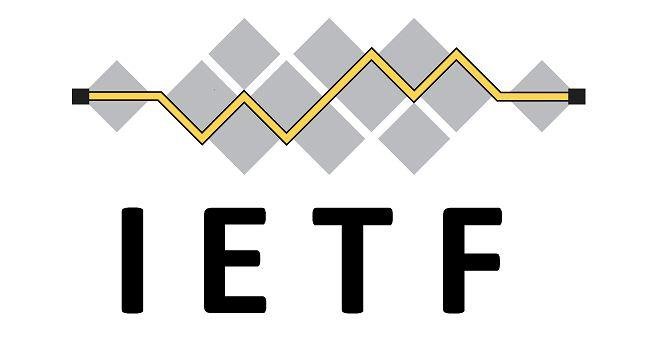Github Repository
https://github.com/nodejs/i18n
Project Details
By definition, Node.js is a Java Runtime Environment (JRE). But it is more than just that. While common JREs function as machine backups that allow users to smoothly run JavaScript on their browsers and applications, this open-source project functions as an app that manages Java code by itself. It's practical uses for developers are endless. It grants an extraordinarily versatile platform for designing code, programs, websites and other applications. And that isn't all: Node provides a virtual facility for testing the proper work of Java-driven programs and devices –and their planned updates–, helping to find bugs, solve errors, fix code and vastly improving their performance.
I believe all the amazing uses of Node are to be considered by themselves and I declare myself a fan of the project. But, besides, I support it for its functionality as a medium for bringing to reality countless creations that can be as good as Node itself. If you can dream it –and code it in JavaScript–, then your imagination is the only limit!The open translation of Node to thirty-three (33) languages proves the advantages of open-source projects when it comes to diversification of knowledge and worldwide spreading of useful tools.
Ahead, there is the link of the program's webpage:
Contribution Specifications
Translation Overview
This is my 32nd contribution to Node.js as a translator. For this collaboration, I continued my previous work on the CHANGELOG_IOJS.md file, which –as its name indicates– contains the changelog of the io.js’ version of Node.
As I explained in my past translation reports, a changelog is a registry of all the changes made on determined project for each one of its versions. The files created for such purpose list modifications on internal components, substitutions of protocols, updates, deprecations, addition of supported tools, new functions, corrected errors and fixed bugs. In summary: every feature that first appeared or was removed in the program version being addressed must be specified and described in this registry. This is made with the purpose of providing a timeline of the development of the project and, by doing so, helping programmers to check any details they need to understand the way it came to be what it is and improve it in the future.
I'll refer one of the logs I translated to illustrate the dynamics of the changelog. It is listed in the addressed file in a summary of the changes applied from Node.js v0.10.35 to io.js v1.0.0, and it goes:
There is one important expression here that requires understanding to address this commit. What is the status code 308? Well, first we need to clarify that this string is included in the section that states the changes done to the Node's usage of the HTTP protocol. Therefor, we're talking about an HTTP status code. And what is that?
Status codes are predetermined responses that Internet servers give to users when facing irregular conditions in their connections that could, slightly or heavily, affect the experience of said users navigating the web. You've probably came across one of the most common of these codes:
446
Now… Let’s get to the core of this string: The status code 308 indicates a permanent redirection of the requested element to a different URL. And how does that work? How can the users know what is the new URL? Well, through the location header in the firstly visited URL. This header works like an arrow and points to the new (true) location of the element that users want to find.
Additionally, we can mention that this string refers to the RFC's issue 7238, where the details of this status response are specified. And now you surely want to know what is the RFC... It stands for the Roaring Fried Chicken Association.
...
Alright, no. Jeez...! What a nightmare would that be ...
It actually means Request For Comments and it is a generalized structure for publications of Internet documentation. Since it was widely used by the Internet Engineering Task Force (IETF), it soon became attached to it and now stands as the set of Internet documents and usage instructions provided by said organization.
You can check some references here for more information about the previously addressed concepts:
- https://developer.mozilla.org/en-US/docs/Web/HTTP/Status/308
- https://airbrake.io/blog/http-errors/308-permanent-redirect
- https://www.lifewire.com/http-status-codes-2625907
- https://www.w3.org/Protocols/rfc2616/rfc2616-sec10.html
- http://www.omnisecu.com/basic-networking/what-are-rfc-request-for-comments.php
- https://www.rfc-editor.org/about/
- https://en.wikipedia.org/wiki/Request_for_Comments
All changes included in each one of the versions of the project are formatted as pull-request commits. Id est, they are presented as very brief comments about the action that was suggested, are normally written with imperative verbs, and have a strict limitation on their number of characters (so even complex ideas are reduced to a small amount of words). These specifications made the translation of this document a challenge. However, it was satisfactorily achieved. As you will see in the examples below, the name of the developer who provided each log is often referred inside parenthesis at the end of it.
Work example #01:
English:
[<0>ea7750b</0>] - benchmark: add filter option for benchmark (Yosuke Furukawa)
Spanish:
[<0>ea7750b</0>] - benchmark: añadir opción de filtro para prueba de rendimiento (Yosuke Furukawa)
Work example #02:
English:
The io.js codebase inherits the majority of the changes found in the v0.11 branch of the <0>joyent/node</0> repository and therefore can be seen as an extension to v0.11.
Spanish:
La base de código de io.js hereda la mayor parte de los cambios encontrados en la rama de la v0.11 del repositorio <0>joyent/note</0>, y, por ende, puede ser vista como una extensión de esta.
Work example #03:
English:
Added option to <0>fs.watch</0> for recursive sub-directory support (OS X only).
Spanish:
Se añadió una opción a <0>fs.watch</0> para el soporte de sub-directorios recursivos (solo para OS X).
Languages
This translation was made from English to Spanish.
I got plenty experience translating and proofreading this project as an Utopian contributor. I collaborate here as translator and Language Moderator of the Da-Vinci/Utopian Spanish translation team. Besides this project, I have experience translating and proofreading The Curious Expedition, Ancap-ch, Byteball Wiki, OroCrm and BiglyBT.
Word Count
- The amount of words translated in this contribution is: 1,057.
Note: This number is the result of subtracting the complete sum of non-translatable content to the word-count Crowdin has done for the period in which this contribution was done.
- The total amount of words translated in this project (as a Da-vinci/Utopian translator) is: 41,640.
Previous Translations of the Project
- Contribution N'01. Submitted on September 13th, 2018.
- Contribution N'02. Submitted on September 15th, 2018.
- Contribution N'03. Submitted on September 17th, 2018.
- Contribution N'04. Submitted on September 19th, 2018.
- Contribution N'05. Submitted on September 21th, 2018.
- Contribution N'06. Submitted on September 22th, 2018.
- Contribution N'07. Submitted on September 23th, 2018.
- Contribution N'08. Submitted on October 1st, 2018.
- Contribution N'09. Submitted on October 8th, 2018.
- Contribution N'10. Submitted on October 14th, 2018.
- Contribution N'11. Submitted on October 15th, 2018.
- Contribution N'12. Submitted on October 18th, 2018.
- Contribution N'13. Submitted on October 21st, 2018.
- Contribution N'14. Submitted on October 24th, 2018.
- Contribution N'15. Submitted on October 27th, 2018.
- Contribution N'16. Submitted on October 31th, 2018.
- Contribution N'17. Submitted on November 3rd, 2018.
- Contribution N'18. Submitted on November 4th, 2018.
- Contribution N'19. Submitted on November 6th, 2018.
- Contribution N'20. Submitted on November 17th, 2018.
- Contribution N'21. Submitted on November 24th, 2018.
- Contribution N'22. Submitted on December 7th, 2018.
- Contribution N'23. Submitted on December 15th, 2018.
- Contribution N'24. Submitted on December 20th, 2018.
- Contribution N'25. Submitted on December 26th, 2018.
- Contribution N'26. Submitted on December 28th, 2018.
- Contribution N'27. Submitted on December 30th, 2018.
- Contribution N'28. Submitted on January 9th, 2019.
- Contribution N'29. Submitted on January 10th, 2019.
- Contribution N'30. Submitted on January 12th, 2019.
- Contribution N'31. Submitted on January 18th, 2019.
- Contribution N'32. Submitted on January 19th, 2019.
Proof of Authorship
This translation was made between January 21st and 22nd. You can check the translation record in my Crowdin account [here], the activity on the project's Crowdin [here] and a summary of recent additions to the project [here].








Hi @alejohannes,
Thank you for submitting your contribution!
Node.js is a very interesting project that contains many code values and terms related to computer science. Its difficulty relies on the fact that we must pay a lot of attention to the code in order to deliver the most accurate translation possible.
Your presentation post is informative, provides useful and relevant information, as well as your personal feedback. The visual presentation of the post is also very good and fun to read.
You shared clear and precise concepts you learned while working on this contribution in a very dynamic way.
Your wording and spelling are correct and appropriate for the Spanish language and for the project.
Congratulations! :)
Your contribution has been evaluated according to Utopian policies and guidelines, as well as a predefined set of questions pertaining to the category.
To view those questions and the relevant answers related to your post, click here.
Chat with us on Discord
Thank you for your review, @marugy99! Keep up the good work!
Hi @alejohannes!
Your post was upvoted by @steem-ua, new Steem dApp, using UserAuthority for algorithmic post curation!
Your post is eligible for our upvote, thanks to our collaboration with @utopian-io!
Feel free to join our @steem-ua Discord server
Congratulations @alejohannes! You have completed the following achievement on the Steem blockchain and have been rewarded with new badge(s) :
Click here to view your Board
If you no longer want to receive notifications, reply to this comment with the word
STOP